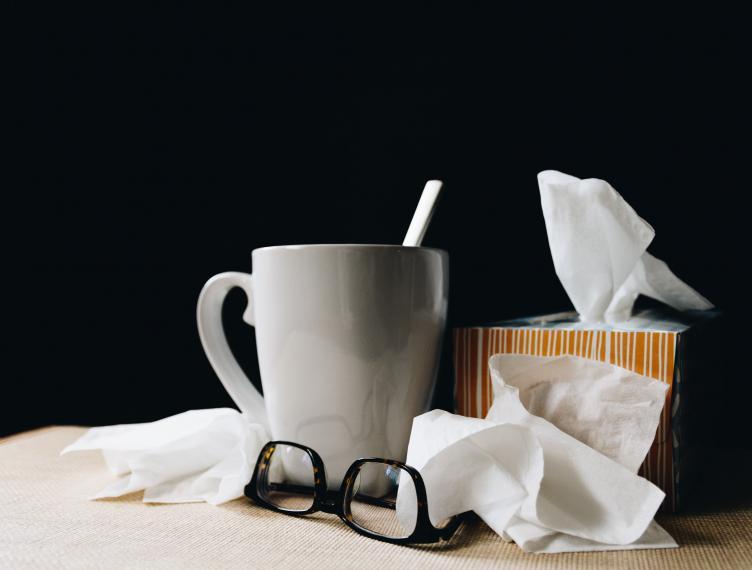It’s that time of year again, cold and flu season. Do you know how to protect yourself?

Colds and flu (influenza) are both caused by viruses. They can spread from infected people to others through the air and close personal contact. This can happen when you shake hands with someone or if the person coughs or sneezes. These tiny drops of mucus spread from person to person. If the droplets get into your nose, eyes or mouth, or if you touch your face with your hands after touching an object that has the virus on it, you could be infected.
Is it a cold or influenza?
It’s sometimes difficult to tell whether you have a flu or a cold, because these two illnesses have similar symptoms. In general, flu symptoms are worse than the common cold.
Cold or Flu?
Symptoms |
Cold |
Flu (Influenza) |
|
Symptom onset
|
Gradual |
Abrupt |
|
Fever |
Rare |
Usual; lasts 3-4 days |
|
Aches |
Slight |
Usual: often severe |
|
Chills |
Uncommon |
Fairly common |
|
Fatigue, weakness |
Sometimes |
Usual |
|
Sneezing |
Common |
Sometimes |
|
Chest discomfort, cough |
Mild to Moderate; hacking cough |
Common; can be severe |
|
Stuffy nose, Sore throat |
Common |
Sometimes |
|
Headache |
Rare |
Common |
How to protect yourself and others
- Wash your hands often with soap and water. Wash for 20 seconds. If soap and water are not available use an alcohol-based hand sanitizer. Viruses that cause the cold/flu can live on your hands; regular handwashing can help protect you from getting sick. Always wash your hands before preparing food or eating.
- Avoid touching your eyes, nose, and mouth. Viruses that cause colds/flu can enter your body this way and make you sick.
- Stay at home while you are sick and get plenty of rest and drink lots of fluids.
- Get enough rest. Poor sleep can decrease your immune system, getting adequate sleep is very important. Stress can also take a toll on the body’s defenses, so try to reduce stress however you can.
- Avoid close contact with others who are sick, such as hugging, kissing, or shaking hands.
- Cough and sneeze into your upper sleeve. Completely covering your mouth and nose or use a tissue and throw it away, rather than putting it in your pocket, on a desk or table.
- Disinfect frequently touched surfaces and objects. Viruses can live for up to 48 hours on hard surfaces such as toys, door handles, TV remotes, phones and light switches.
- Get the flu vaccine each year. If you do get the flu, the vaccine can reduce the severity or duration of the illness. (There is no vaccine for colds) https://wellness.uoguelph.ca/flu-clinic.

Resources:
Flu (influenza): Prevention and risks (Government of Canada): https://www.canada.ca/en/public-health/services/diseases/flu-influenza/prevention-risks.html
The flu: https://www.ontario.ca/page/flu-facts
Common cold protect yourself and others: https://www.canada.ca/en/public-health/services/diseases/flu-influenza/prevention-risks.html

